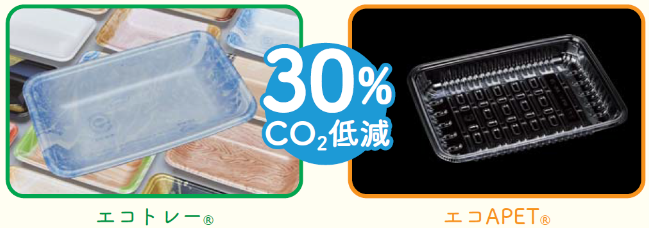Recycling Q&A
|
Where can we find the collection boxes for used trays? |
|
They can be found at many supermarkets nationwide. |
|
What points should we pay attention to when contributing used trays to the collection boxes? |
|
Clean and dry them before bringing them to a box. It is easy to tell whether or not trays are recyclable. For foamed polystyrene traysThe tray can be easily pierced by a toothpick. Trays that fall under the following cannot be recycled, even if they can be pierced by a toothpick. 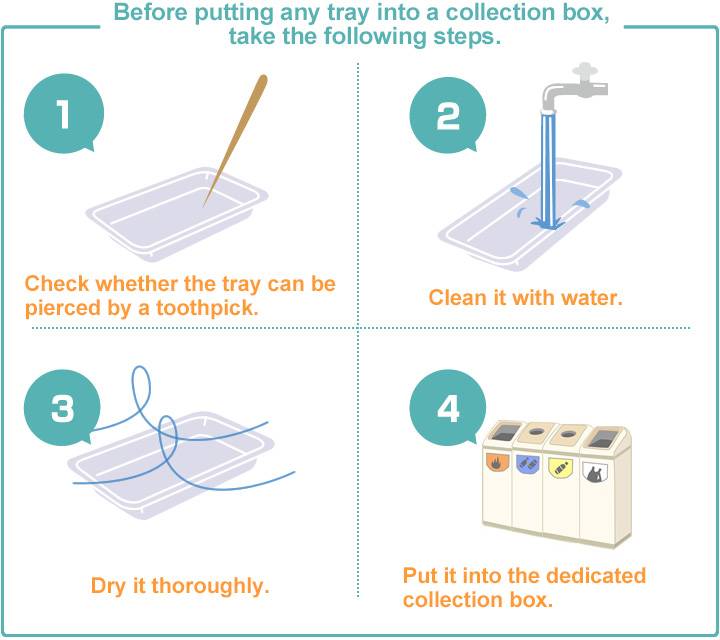 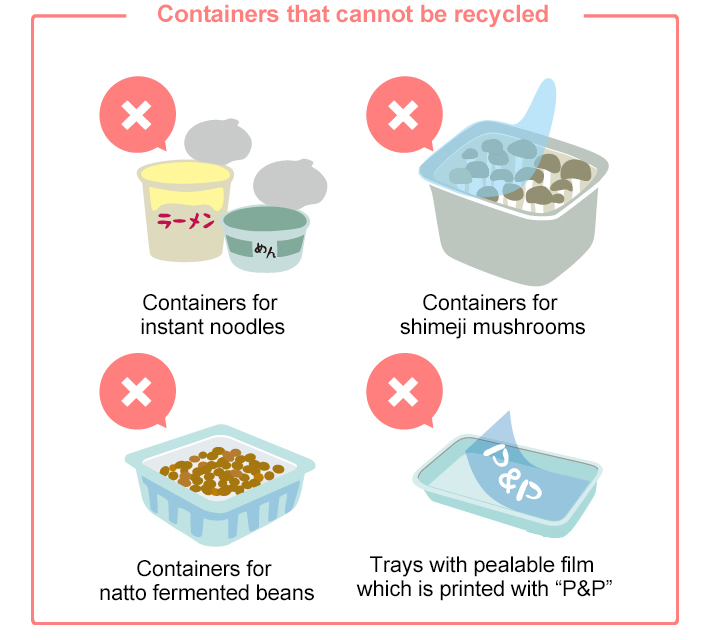 For transparent containersIf the transparent container has any printed areas, be sure to cut them off before bringing the remainder to the collection box. Transparent containers falling under the following cannot be recycled. 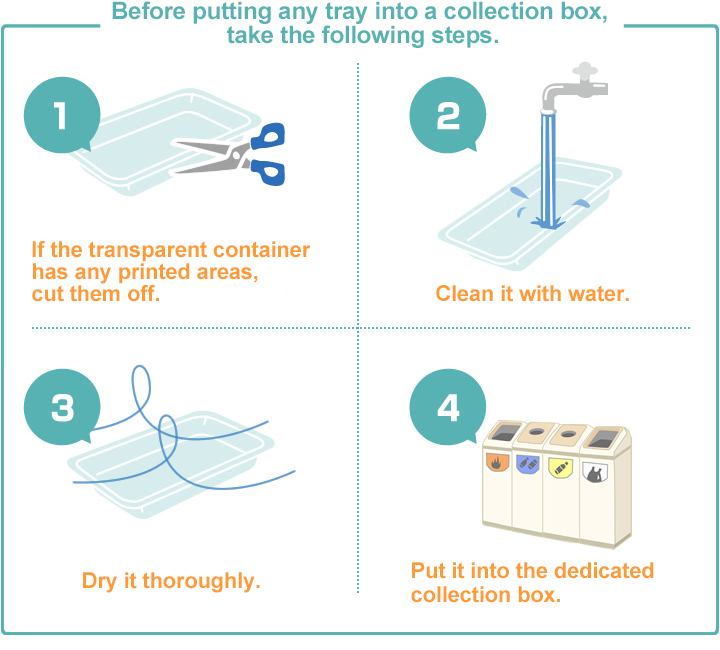 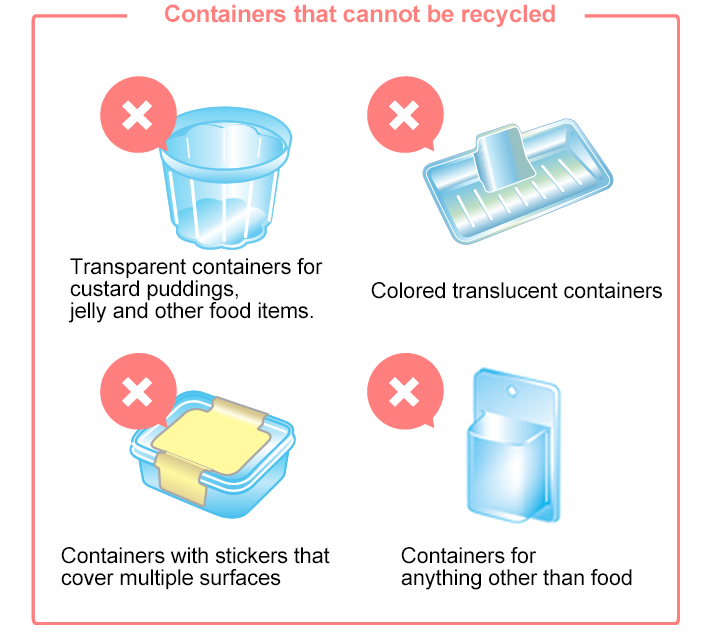 For PET bottlesRemove the cap and the label and rinse the inside of the bottle before bringing it to the collection box. PET bottles that fall under the following cannot be recycled. 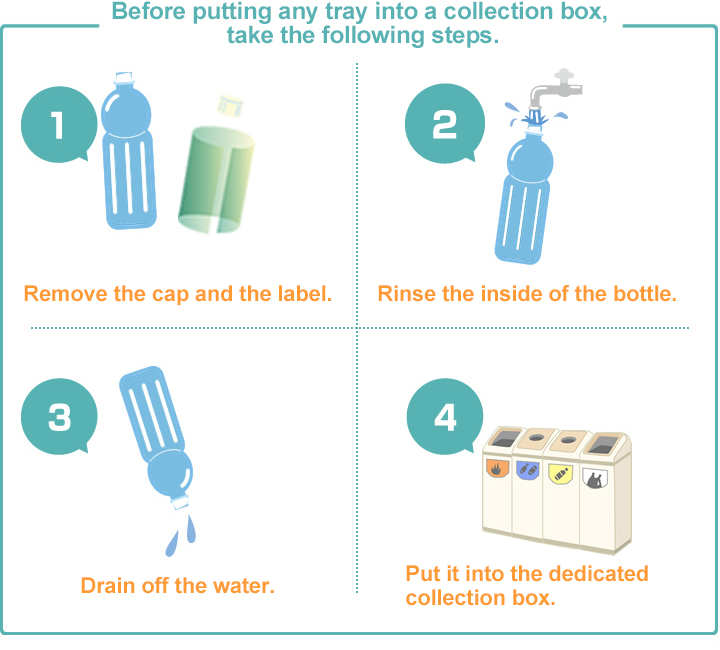 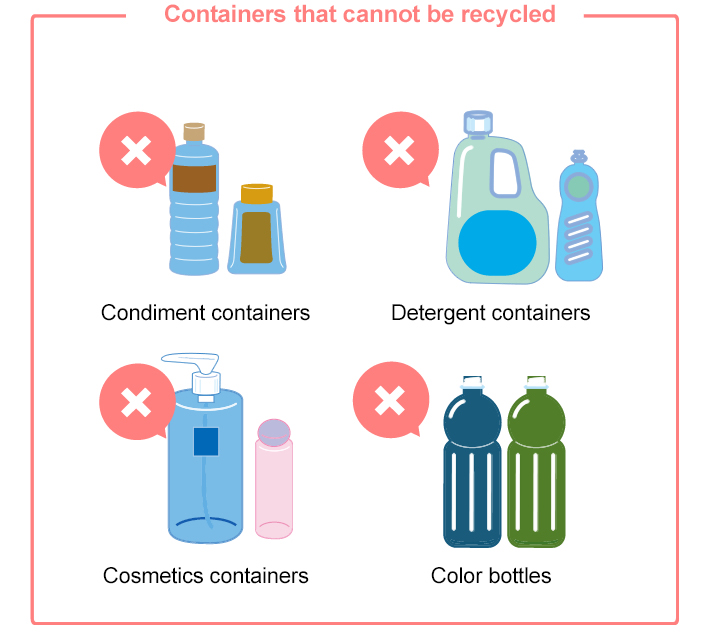 |
|
What percentage of used trays is collected? |
|
Calculated based on the shipping volume of the foamed polystyrene trays we produce and the collection volume, the current collection rate stands at around 30%. |
|
On a collection box for used trays at a supermarket, I saw a sign reading, “Do not deposit colored trays.” Why? |
|
At FPCO, we have been collecting colored trays since we began recycling. |
|
Is it possible to recycle hard food trays used for bento boxed meals and prepared food into trays? |
|
To date, food trays and containers like these are classified as products that are made of non-recyclable materials. |
|
What if items other than trays are found in a collection box for used trays? |
|
We remove all items other than used trays in the manual sorting process. |
|
Can you recycle used trays manufactured by other companies? |
|
They can be recycled into the Eco Tray® as long as they are made of the same material. After sorting by material, we recycle all trays that can be recycled, irrespective of their manufacturers. |
|
Will you recycle used trays collected by municipal governments? |
|
In FY2016, we collected white trays from 130 local governments. |
|
Why do you not just clean used trays for reuse? |
|
Even after careful cleaning, used trays tend to have scratches, deformation or other damage. |
|
Is it possible to recycle trays that are produced by recycling again (i.e. the Eco Tray®)? |
|
The Eco Tray® can be recycled again and again. The Eco Tray® is also produced from the Eco Tray®. |
|
What is the ratio of food trays and containers produced from new materials to recycled trays? |
|
At present, the Eco Tray® accounts for nearly 25% of general food trays and containers, or foamed polystyrene trays for meat and fish, |
|
Do all the FPCO-branded food trays and containers fall under the category of recycled products? |
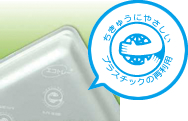 No. FPCO also manufactures and sells virgin trays, or food trays and containers made of new materials. |
|
Which generate lower CO₂ emissions, virgin trays (food trays and containers made of new materials) or recycled trays (Eco Tray®)? |
|
Our calculation of total CO₂ emissions at all stages from materials and manufacturing to disposal and recycling in accordance with the Product Category Rules for the EcoLeaf Environmental Label Type III for formed plastic sheet products for food applications has confirmed that the CO₂ emissions from the Eco Tray® are one third lower than those from virgin trays. |
|
|
|
This symbol has been established by the U.S. Society of the Plastics Industry to represent the materials of containers. It is called the SPI Code.  |
|
Do we have to remove stickers on transparent containers? |
|
Basically, you do not need to remove them. However, containers with stickers that cover wide areas cannot be sorted, so we do not collect them. |
